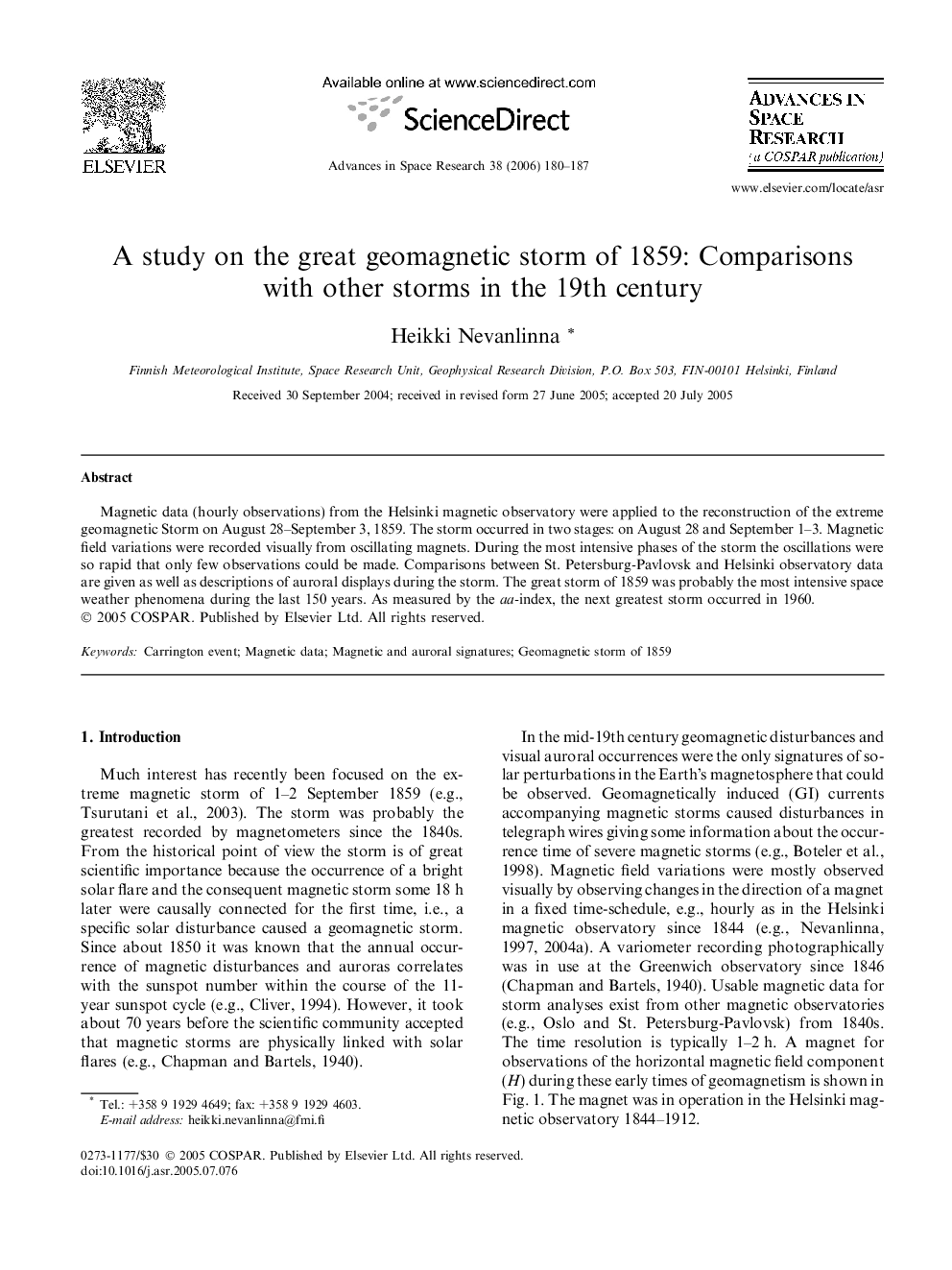| Article ID | Journal | Published Year | Pages | File Type |
|---|---|---|---|---|
| 1767100 | Advances in Space Research | 2006 | 8 Pages |
Abstract
Magnetic data (hourly observations) from the Helsinki magnetic observatory were applied to the reconstruction of the extreme geomagnetic Storm on August 28-September 3, 1859. The storm occurred in two stages: on August 28 and September 1-3. Magnetic field variations were recorded visually from oscillating magnets. During the most intensive phases of the storm the oscillations were so rapid that only few observations could be made. Comparisons between St. Petersburg-Pavlovsk and Helsinki observatory data are given as well as descriptions of auroral displays during the storm. The great storm of 1859 was probably the most intensive space weather phenomena during the last 150 years. As measured by the aa-index, the next greatest storm occurred in 1960.
Keywords
Related Topics
Physical Sciences and Engineering
Earth and Planetary Sciences
Space and Planetary Science
Authors
Heikki Nevanlinna,
